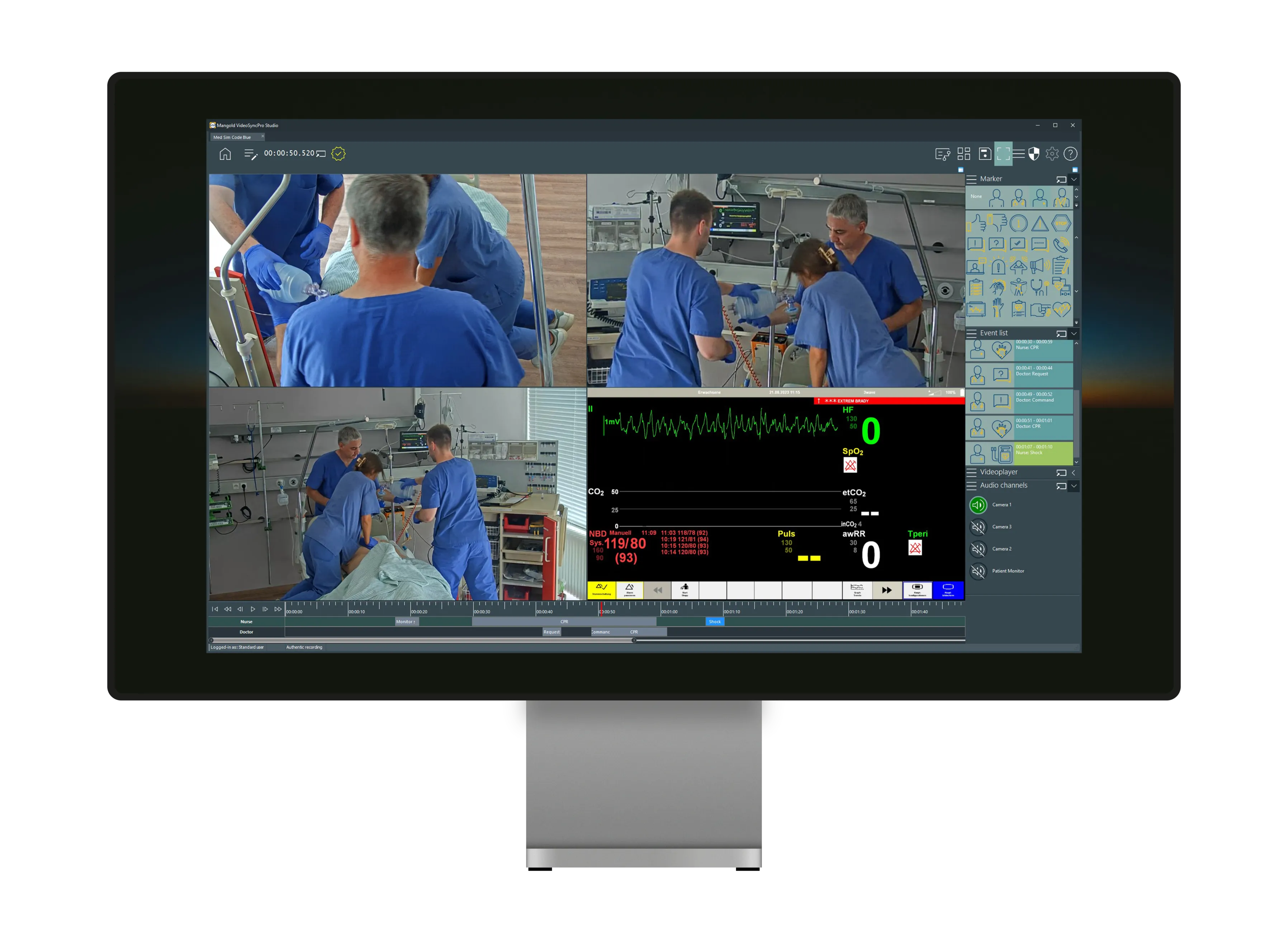Product · 4 min read
What is video feedback and debriefing in simulation training?
Learn how video feedback systems can sustainably improve learning success in medical simulation or other simulation training.
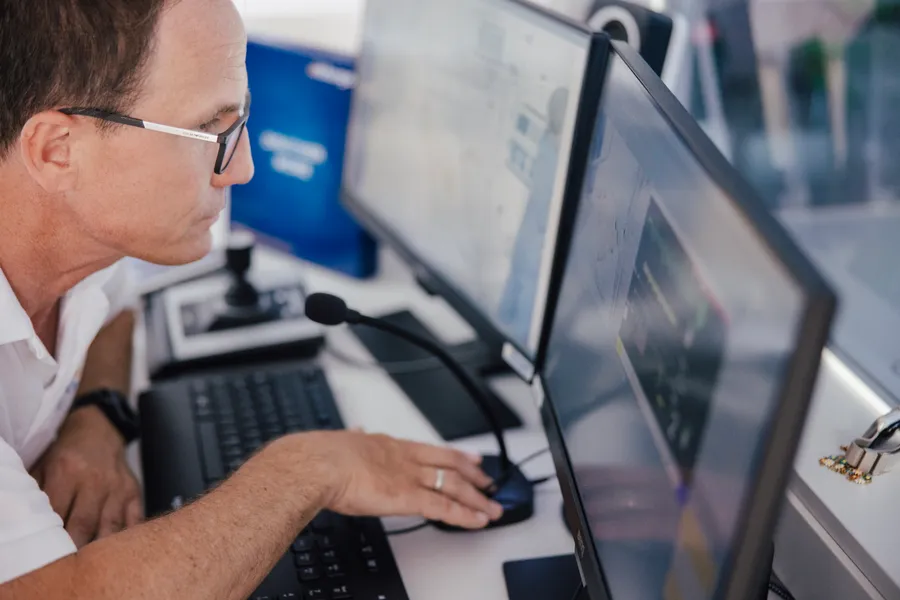
Video feedback and debriefing in simulation training. An indispensable tool for medical education
Practice-oriented training is essential in medical education for developing and consolidating the skills of doctors, nurses and other healthcare providers. Simulation training is one of the most effective methods of practising realistic scenarios while ensuring patient safety. Video feedback and debriefing are key elements that make this training even more effective, increasing the quality of training and improving education and continuing professional development opportunities.
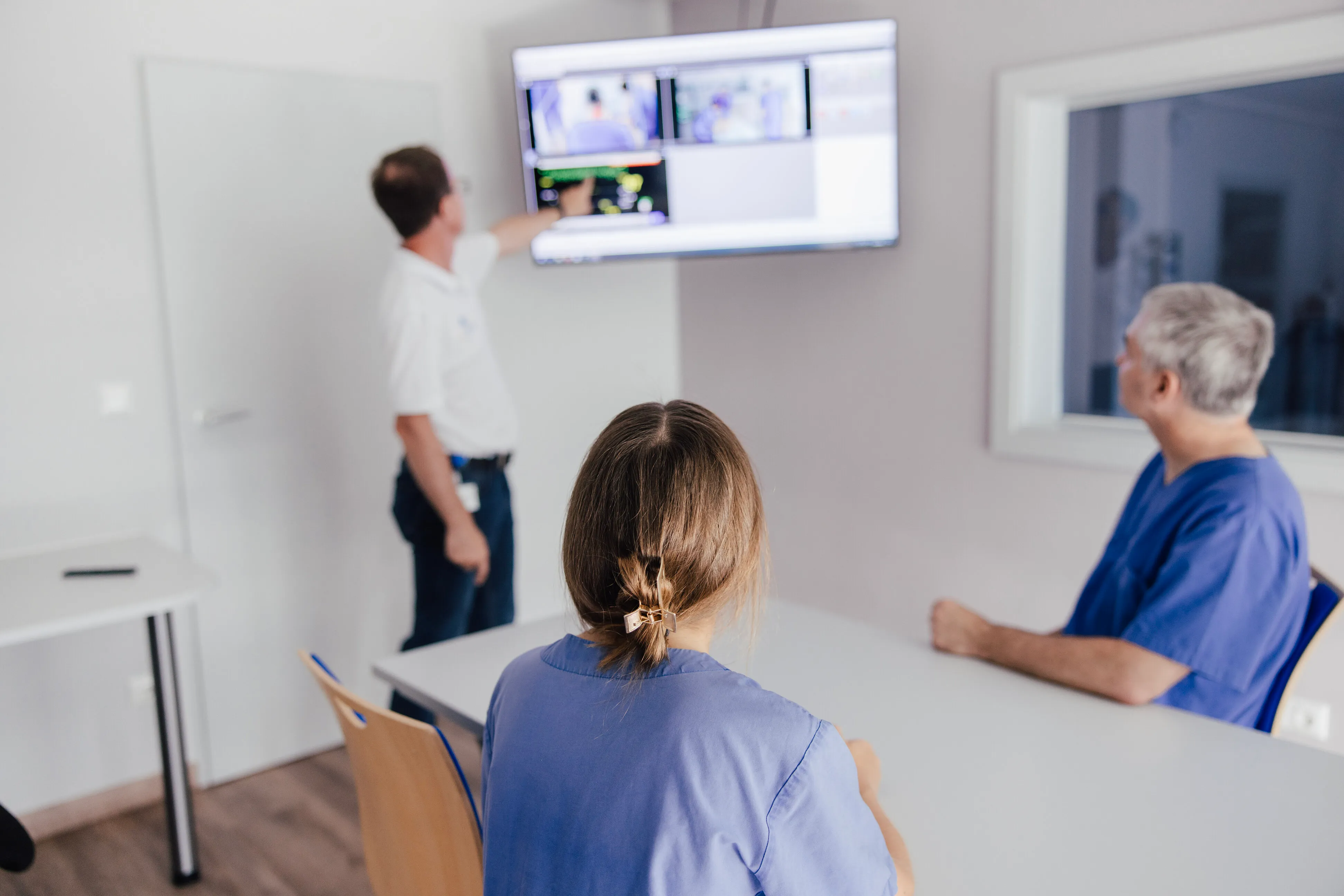
I. The potential of AV debriefing systems in medical education
AV debriefing systems have proven particularly valuable for simulation training in medical education. These systems enable training sessions to be recorded and analysed in real time. When used with either a mobile or stationary AV debriefing system, the actions and team communication during a training session can be accurately recorded and reviewed. Mobile solutions offer flexibility, while stationary systems provide consistent, high-quality recording and evaluation for larger training centres and simulation facilities.
II. From recording to analysis: a step-by-step approach
-
Recording: Mobile and stationary recording and debriefing systems capture image and audio signals from simulation training sessions. Whether the simulation is high-fidelity or less complex, the technology ensures that every moment of the training is accurately recorded. Mobile recording and debriefing systems make it possible to conduct simulations in various environments, including hospitals, training facilities and operational sites.
-
Debriefing: The video debriefing system for simulation training enables detailed debriefing of the simulation. The visual and audio presentation of the training process enables trainers and participants to address specific aspects of team performance, communication and decision-making. This means that both individual performance and teamwork, as well as patient care, are evaluated in the simulation.
-
Feedback: A feedback culture is a central component of simulation training. With a debriefing tool for medical education, mistakes can be swiftly identified and used as learning opportunities. Feedback is provided in a constructive manner to motivate learners and help them improve their skills. This is particularly important in medical education, for example in nursing or midwifery training.
-
Documentation and evaluation: With an AV system for simulation, training and learning centres, every training scenario can be documented and evaluated in a standardised manner. This documentation is important not only for the ongoing evaluation of training, but also for quality assurance and the recording and management of simulation training in healthcare.
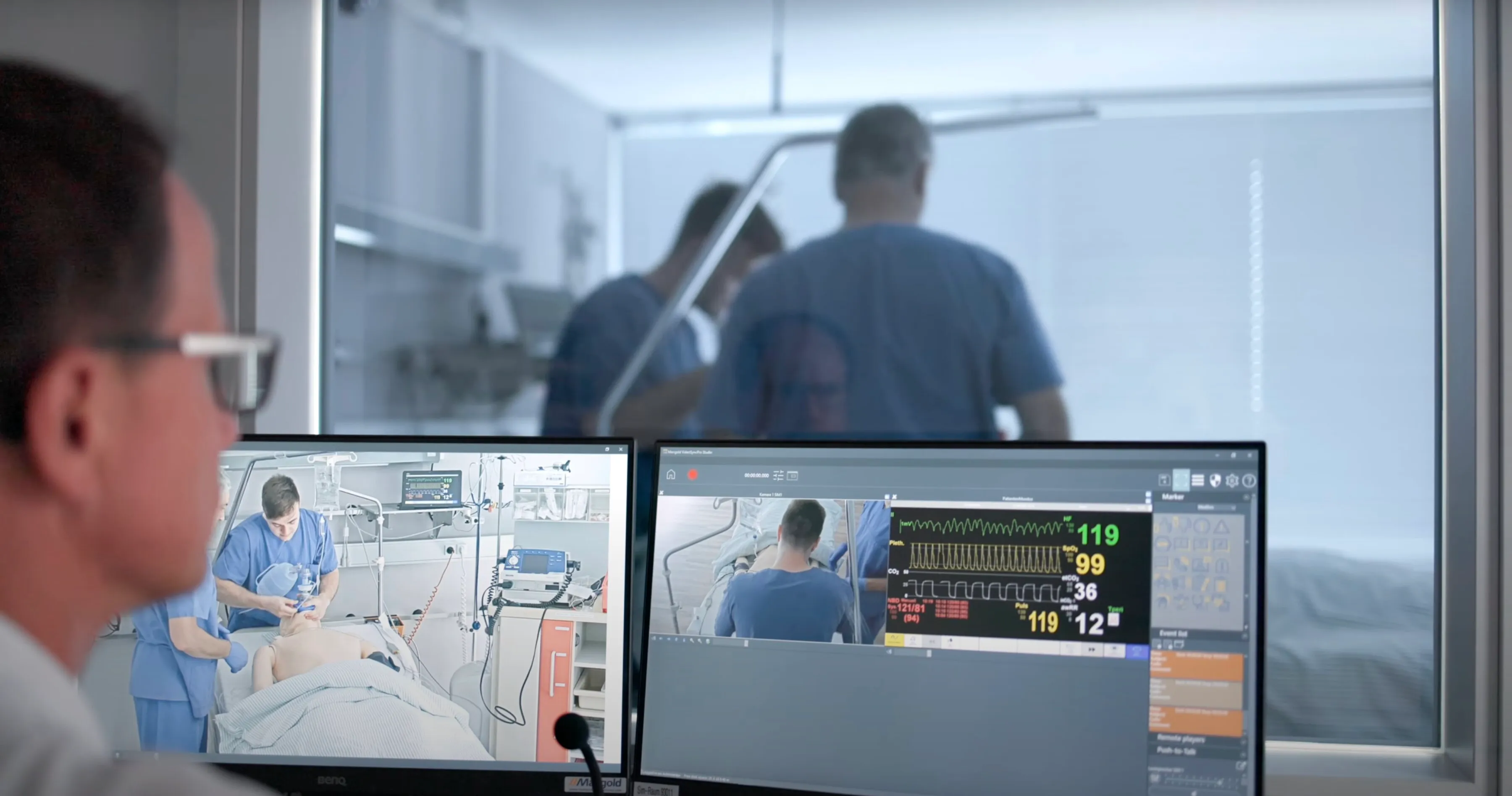
III. The advantages of video feedback in medical simulation training
1. Improved team communication: Teamwork is crucial in medical practice. Simulation training with video feedback encourages reflection on team performance and helps to identify and improve communication errors.
2. Higher training quality: Through detailed evaluation of simulation training, trainers can ensure that simulation training remains at a high level. High-end AV systems offer high image and sound quality, which is necessary for precise analysis.
3. Practical and realistic simulation solutions: With a mobile simulation system or an AV simulation system, realistic scenarios can be created that prepare learners for the actual challenges of everyday medical practice.
4. Increased patient safety: Studies have shown that the use of simulation training and subsequent video debriefing significantly improves patient safety. Learners can correct their mistakes in a safe environment and learn from experience without putting patients at risk.
5. Consistent evaluation and feedback: A standardized debriefing ensures that all participants receive the same type of feedback and that their performance is evaluated objectively. This leads to more consistent and sustainable training.
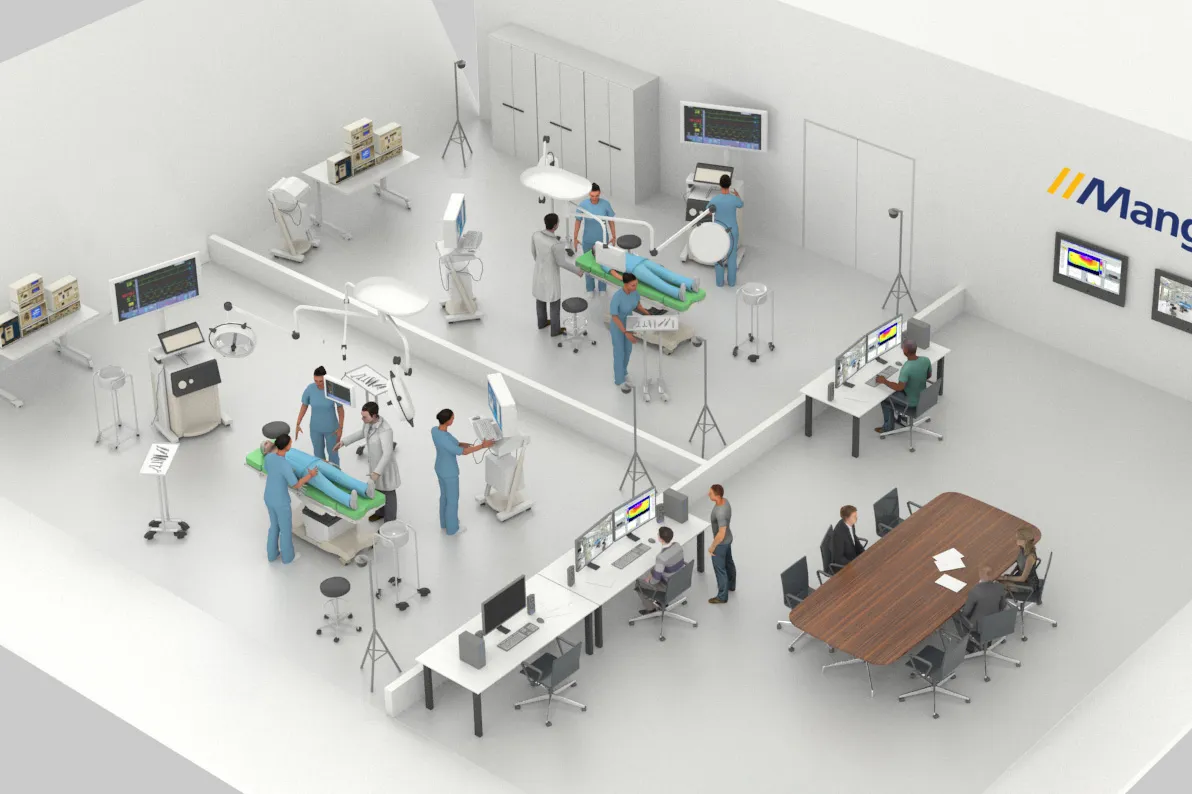
IV. The Future of AV Systems in Medical Education
As technology continues to advance, the importance of AV systems in simulation training will grow. The integration of all-in-one AV systems, which combine recording, analysis and debriefing in one solution, will further increase the efficiency of simulation training. Mobile AV system solutions also offer great potential for increasing the flexibility and accessibility of simulation training.
Effectively evaluating and documenting simulation training thus becomes a key element of quality assurance in medical education. This ensures that all learners are trained to the same high standard and continuously work on improving their team performance and individual skills.
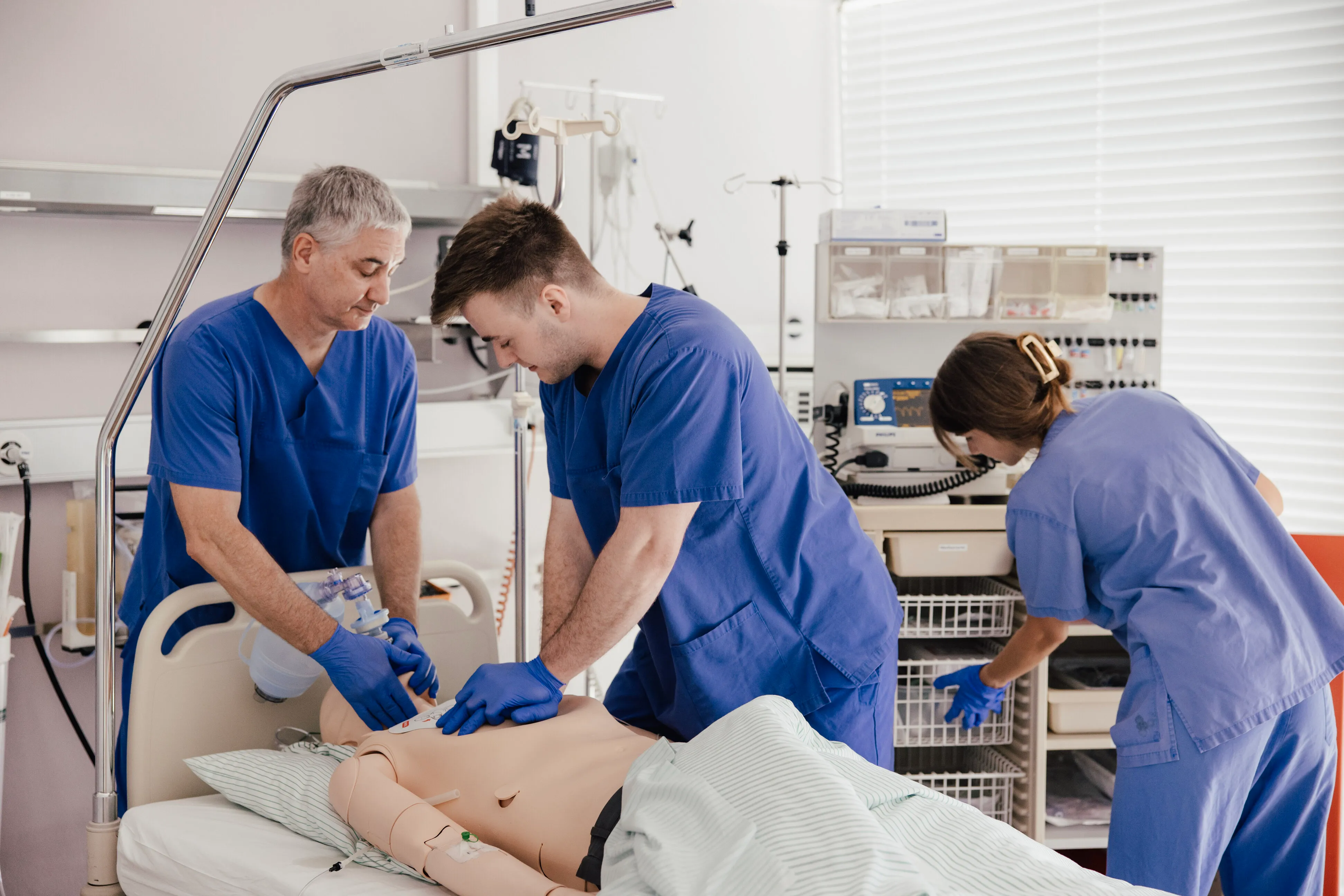
V. Conclusion: An indispensable aid for medical training
Using video-based debriefing in simulation training has been shown to greatly improve training quality, enhance team communication and ensure patient safety. Modern AV debriefing systems allow medical professionals to develop and improve their skills more efficiently, leading to better outcomes in real-world patient care. The targeted use of video feedback makes simulation training more efficient, realistic and sustainable, making it an indispensable tool for future medical education.
Video Feedback and Debriefing in Medical Simulation
Explore Mangolds powerful video-feedback solutions for training healthcare professionals in medical simulations.
